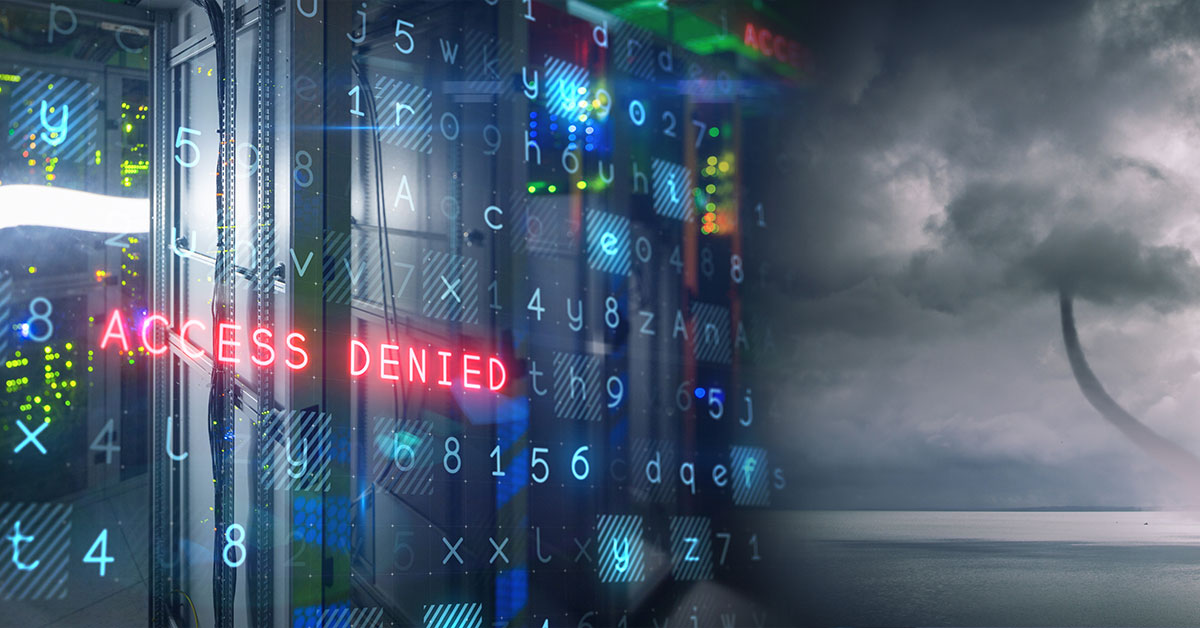New Orleans residents have disasters at the forefront of their thoughts always, as they’re the most concerned household in the United States regarding living in a high-risk flood zone thanks to Hurricane Katrina.
And of course, the effects of Hurricane Ida don’t help with the constant sense of impending doom. Hurricane Ida resulted in severe flooding, water damage, and sewage back-up across Louisiana, and the impacts are still being dealt with months later.
The fact of the matter is that, with disasters in New Orleans, disasters are imminent. It’s just a matter of when they occur. And when they do, you’ll want to be ready.
A business that faces an actual disaster where the recovery site fails to work faces downtime where it can’t function. Not to mention, when you don’t keep up with updating or maintaining your recovery site, there’s not much point in trying to use it in the event of a disaster.
Within this article, we’ll take a look at what’s currently available for businesses in New Orleans to help with DR (Disaster Recovery) by the state, how companies currently recover, and what can be improved to ensure businesses are 100% ready for any disaster.
Does the State Provide Businesses with Help?
New Orleans was hit incredibly hard with Hurricane Katrina, and Hurricane Ida has reinstated that fear of disasters occurring and turning lives upside down.
For businesses, New Orleans does offer some assistance in the case of a disaster occurring.
They have a Business Continuity Guide, which outlines how businesses can prepare for disasters and recover after one strikes. In the event that a business needs to evacuate their employees, there are also designated evacuation zones they can go to, as well as safehouses that are built to withstand hurricane-level winds.
As well, there are disaster recovery services that businesses can utilize, ranging from restoration to construction services.
However, when an outage happens and data is lost or hacked, these resources don’t cut it to help protect a company’s most important asset — their data.
Current Recovery Plan for Businesses in New Orleans
A common way for a business to prepare for a disaster is to have an annual DR test performed.
However, testing annually can leave pitfalls in how to prepare for an actual disaster.
On top of that, current DR tests come with several flaws, such as the data volume and width restrictions they present, improper maintenance at the best of times, testing being incomplete or presenting an inaccurate representation of disasters, or testing for the wrong circumstances.
IT professionals in particular know just how huge a risk it is for businesses to not have proper DR testing. It can lead to operations being disabled, receiving ransomware attacks, or result in devastating employee errors due to improper training measures. Other professionals, however, are all-too-unfamiliar with how disasters can cause irreparable damage to their companies.
For a business to be 100% ready for any disaster and be confident about its DR plan, it must conduct regular, thorough, and automatic DR testing.
A New Way for Disaster Recovery
When DR testing is done frequently, businesses are able to recover lost data in mere seconds. In fact, almost 25% of businesses testing regularly were able to recover data in seconds or minutes, resulting in no or very low amounts of data being permanently lost.
On the other side of this, businesses who experienced actual disaster events and weren’t prepared found that on average they had 40% downtime. This happened because of incompatibilities between their production site and their DR site.
Think about it: when you use your product site every day, you update and maintain it regularly to ensure the best performance. However, your DR site is not often used, so most companies don’t think to regularly update it. This results in major issues when disasters occur and businesses are trying to get their systems back up.
Because of this, the first step to getting prepared for a disaster is to have your business tested to ensure your DR site really works. The IT team should run weekly DR drills to make sure you are covered across all eventualities. Ideal testing would include turning the DR scenario on in a bubble network and thoroughly testing the servers, the domain controller, the applications, the databases, web portals, network connections, resources and so on.
This reduces your risk of extensive damage by showing you how to take corrective action before the next disaster strikes.
Key Takeaways
With New Orleans having such an increased risk factor for natural disasters, businesses simply can’t afford to skip out on disaster recovery. Instead of hoping that nothing will go wrong in the event of an actual disaster, you should embrace disaster simulations (DR tests) and use them to be 100% ready.
With automatic and frequent testing done through intuitive software, businesses can have confidence as they operate, knowing they’re ready for any disaster that could come their way.
As well, conducting a Recover Readiness Score will enable businesses to easily see where they need to make improvements.
Do you want to be 100% disaster-ready? EnsureDR can help you. Reach out to one of our sales reps for a demo at 877-418-7005 or by filling out our contact form here.
Don’t wait—invest in recovery validation today.
